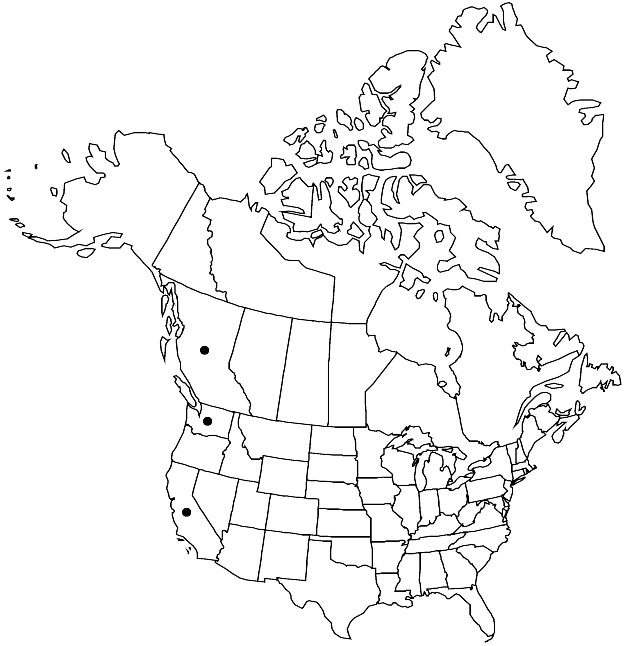Homalothecium arenarium
Bull. Torrey Bot. Club 92: 346. 1965.
Plants medium-sized, in loose to moderately dense tufts, light green to pale yellowish. Stems to 5 cm, irregularly branched, branches 5–10 mm, ± ascending. Stem leaves appressed when dry, narrowly ovate-triangular, 1.5–2 × 0.5–0.7 mm; base slightly narrowed, broadly short-decurrent; margins plane or often recurved at places, subentire to serrulate proximally, serrulate to serrate distally; apex gradually tapered or short-acuminate; costa to 70–100% leaf length, terminal spine absent or more rarely sharp and distinct; alar cells subquadrate or ovate, 10–18(–35) × 9–13 µm, region extending along margins in 8–15 rows; laminal cells linear-flexuose, 30–75 × 4–6 µm; basal cells irregularly isodiametric, region in 5–8 rows, conspicuous across base, broad throughout or near costa and margins. Branch leaves appressed when dry or moist, lanceolate, 0.6–1.5 × 0.3–0.5 mm; margins plane to recurved throughout, serrulate to serrate distally; apex acuminate to acute; costa to 70–95% leaf length, terminal spine present, toothed abaxially near its end; alar cells subquadrate, 6–10 µm, indistinctly delimited from basal region; laminal cells linear-flexuose, 50–90 × 5–6 µm; basal cells in 3–7 rows; distal cells prorate on abaxial surface. Sexual condition dioicous. Seta 1–1.5 cm, rough. Capsule inclined to horizontal, subcylindric, curved, 1.5–2 mm; annulus separating by fragments; operculum conic; peristome xerocastique, perfect; exostome teeth transverse-striolate proximally, with short transitional zone; endostome basal membrane 1/3 endostome height, segments as long as exostome teeth, broad, cilia 1 or 2, slightly shorter than segments. Spores 11–14 µm.
Habitat: Sandy soil, rock, coastal
Elevation: low to moderate elevations (0-1200 m)
Distribution

B.C., Calif., Wash., Mexico (Baja California).
Discussion
The only specimen of Homalothecium arenarium from outside the coastal zone was collected in San Diego County, California, along a highway at 1200 m, where it likely was introduced unintentionally. The analysis by S. Huttunen et al. (2008) demonstrated that H. arenarium is distinct from the rest of the genus and probably deserves recognition in its own genus. Unlike in most other species of Homalothecium, the costa ends in a spine, pinnate branching is lacking, and the plant color is similar to Brachythecium, which is without the tendency to a rich golden or honey color. The peristome is perfect in this species, although not unique in Homalothecium where most species exhibit a degree of peristome reduction. Sterile plants resemble B. laetum, but the latter species has basal cells never so numerous and usually quite irregular, in contrast to rather homogeneous basal cells of H. arenarium. Sporophytes are rare.
Selected References
None.